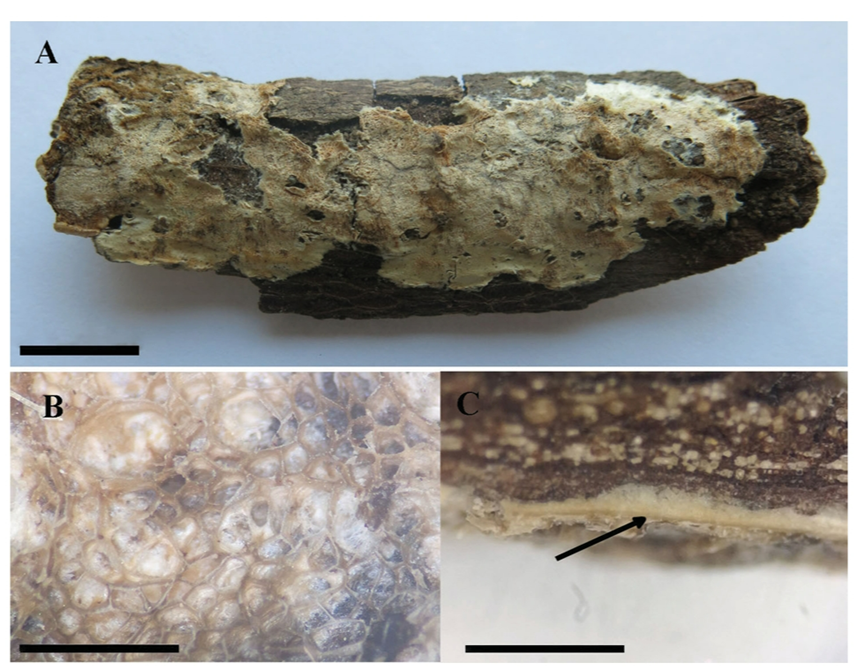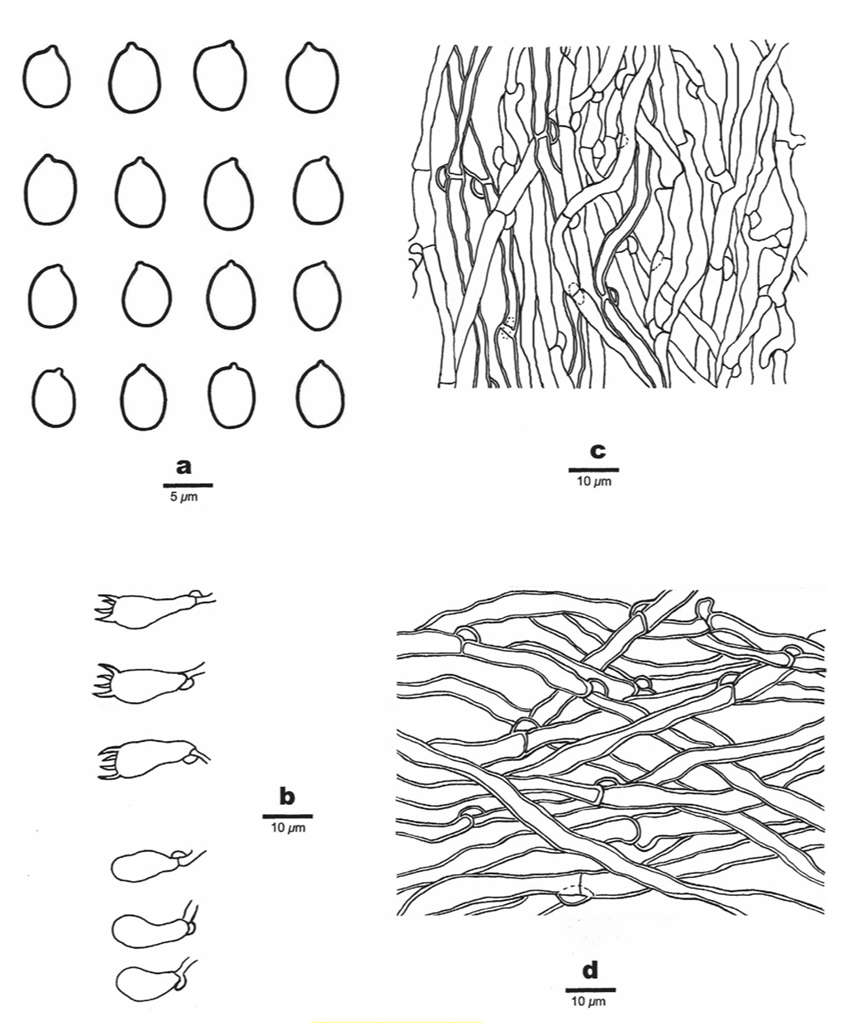 83
83
Bjerkandera resupinata Y.C. Dai & Chao G. Wang, sp. nov. 2021
MycoBank : 838581
Type:Thailand. Chiang Rai, Doi Mae Salong, rotten angiosperm trunk, 22. VII. 2016, Y.C. Dai 16642 (holotype BJFC022752).
Description:
Sexual morph: Basidiomata. Annual, resupinate, adnate, soft corky, without odor or taste when fresh, becoming corky when dry, up to 6 cm long, 2 cm wide, 0.5 mm thick at base. Pore surface pinkish buff to pale brownish when dry, becoming dark grey in bruised parts; sterile margin distinct, thinning out, somewhat incised, up to 3 mm wide; pores round to angular, 4–6 per mm; dissepiments thin, entire to lacerated. Subiculum pale cream, slightly fibrous to corky, up to 0.2 mm thick. Tubes concolorous with the pore surface, darker than the subiculum, corky, up to 0.3 mm long, with a distinct dark line between tubes and subiculum. Tubes. Generative hyphae thin- to slightly thick-walled, frequently branched, loosely interwoven, 2.7–3.8 μm in diam. Cystidia and cystidioles absent. Basidia clavate, with four sterigmata and a basal clamp connection, 14–16 × 5–6.5 μm; basidi oles in shape similar to basidia, but smaller. Basidiospores. Ellipsoid to broadly ellipsoid, hyaline, thin-walled, smooth, CB–, IKI–, 4.5–6(–6.2) × 3.2–4.1(–4.2) μm, L = 5.23 μm, W = 3.71 μm, Q = 1.40–1.42 (n = 60/2).
Asexual.morph:Undetermined:
Hyphal structure: Hyphal system monomitic; generative hyphae with clamp con nections, smooth, hyaline to yellowish, CB+, IKI–; tissues becoming dark in KOH.
Culture: Undetermined:
Habitat: Undetermined:
Distribution:China
GenBank Accession: ITS MW507117,LSU MW520216;ITS KU509526
Notes: Undetermined:
Reference: [1] Wang, C. G. , Josef Vlasák, & Dai, Y. C. . (2021). Phylogeny and diversity of bjerkandera (polyporales, basidiomycota), including four new species from south america and asia. MycoKeys, 79, 149-172.

A basidiomata B poroid surface detail C a dark line between tubes and subiculum. Scale bars: 1 cm (A); 1 mm (B, C).

a basidiospores b basidia and basidioles c hyphae from trama d hyphae from subiculum.

